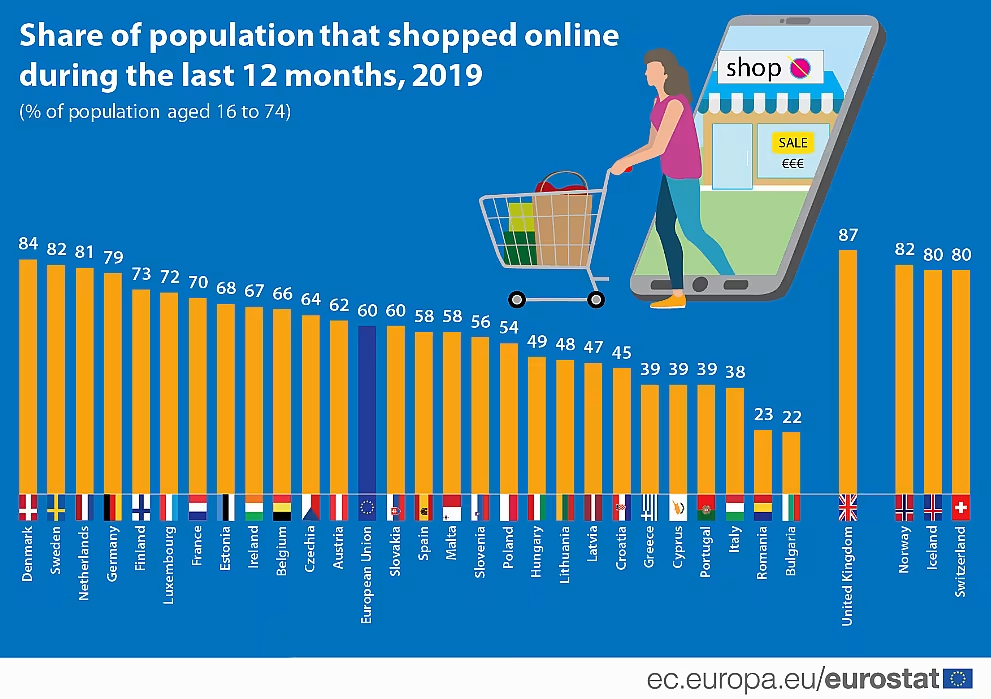Online shopping in the European Union continued to grow in 2019, driven by an increase in Internet usage, improved security standards, access to a wide range of products, easy price comparisons and convenience, according to a Eurostat report.
In 2019, around 60% of shoppers in the EU between the age of 16 to 74 shopped online at some point during the year, up from 56% in 2018, data showed.
The percentage of female online shoppers increased from 29% in 2009 to 59% in 2019, while online shopping amongst males increased from 35% to 61% in the same period.
The study also found that in the last ten years, the percentage of online shoppers almost doubled from 32% in 2009.
Regional Trends
In 2019, Scandinavian countries saw the highest share of customers engaging in online shopping.
Denmark emerged on top of the list with 84% shoppers opting for online shopping at some point during 2019, followed by Sweden (82%), the Netherlands (81%), Germany (79%) and Finland (73%).
However, Estonia witnessed the highest growth in online shopping in the past 10 years, with its share of online shoppers up 51 percentage points from 17% in 2009 to 68% in 2019.

In the ten years to 2019, the highest growth in online shopping was seen in customers aged 25 to 34 years, up from 46% in 2009 to 79% in 2019.
This was followed by the age groups 16 to 24 years, (up from 41% to 73%), and 35 to 44 years, (up from 41% to 71%), and 45 to 54 years (up from 31% to 61%), the report said.
Among shoppers aged 55 to 64 years, online purchases increased from 19% in 2009 to 45% in 2019, while in the age group of 65 to 74 years, it grew from 8% to 28%.
© 2020 European Supermarket Magazine – your source for the latest retail news. Article by Dayeeta Das. Click subscribe to sign up to ESM: The European Supermarket Magazine.











